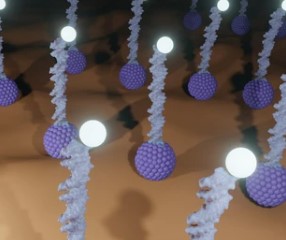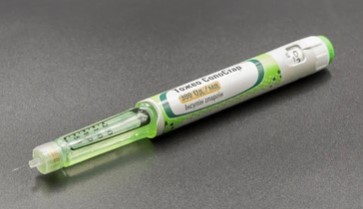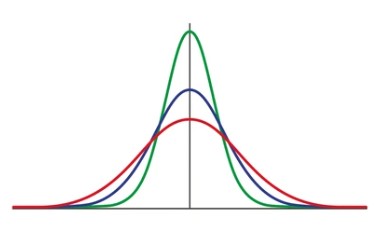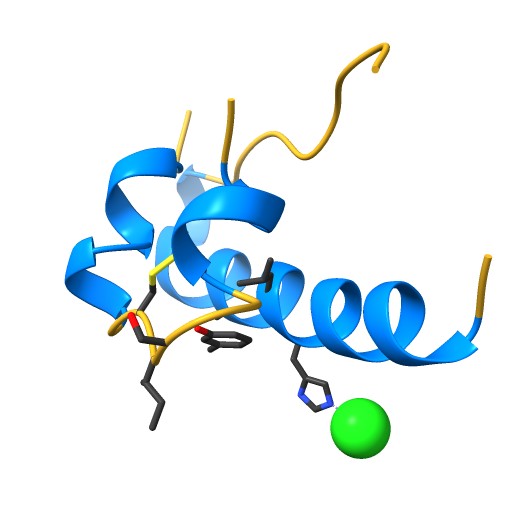Uncategorized Thursday, 2025/06/05
Biological Activity Analysis Methods
Time-Resolved Fluorescence Immunoassay (TRFIA)
Method Principle
TRFIA is an immunoassay method based on time-resolved fluorescence technology. After insulin binds to cell receptors, it triggers tyrosine phosphorylation of the receptor's β subunit. The phosphorylated group forms a complex with anti-receptor α antibodies and europium-labeled antibodies in a double-antibody sandwich manner. By adding an acidic enhancement solution, the solid-phase antibody complex is dissociated and forms a chelate with diketone and octylphosphine molecules in the enhancement solution, leading to the production of highly uniform fluorescence. The biological activity of insulin can be quantitatively measured by detecting the fluorescence signal.
Application Example
Yang Yanfeng and others developed a method for detecting the biological activity of human insulin based on transgenic cells using a time-resolved fluorescence immunoassay system. They used CHO-INSRB1284 transgenic cells (2.5×10⁵ per mL) as target cells and performed a threefold serial dilution starting from an initial concentration of 400 pmol/mL for human insulin. The drug interacted with the target cells for 20 minutes, and the biological activity was detected through the time-resolved fluorescence immunoassay system.
This method demonstrated a good dose-response relationship for human insulin, conforming to a four-parameter equation. It possesses strong specificity, relative accuracy, and good precision, with a linear range of 64% - 156%, a slope of 1.031, and an R² greater than 0.98.

Other Biological Activity Analysis Methods
Aside from the TRFIA method, there are other methods for analyzing biological activity, such as the glucose oxidase-peroxidase method and in vitro biological activity assays based on cell signaling pathways.
The glucose oxidase-peroxidase method evaluates insulin potency by measuring the reduction of blood glucose in mice, although it has shortcomings such as complex experimental procedures and poor precision. In contrast, in vitro biological activity assays based on cell signaling pathways have gained widespread use due to their ease of operation, high specificity, and sensitivity.
Related Proteins
| Cat.No. # | Product Name | Source (Host) | Species | Tag | Protein Length | Price |
|---|---|---|---|---|---|---|
| INS-315H |
Recombinant Human Proinsulin protein

|
E.coli | Human | Non | 25-110 aa | |
| INS-623C | Recombinant Full Length Cynomolgus Monkey insulin Protein, His tagged | HEK293 | Cynomolgus | His | Full L. 25-110 aa | |
| INS-623CE | Recombinant Full Length Cynomolgus Monkey insulin Protein, His tagged | E.coli | Cynomolgus | His | Full L. 25-110 aa | |
| INS-14H |
Active Recombinant Human Insulin, Low Endotoxin, Media Grade
|
E.coli | Human | Non |
|
|
| INS-256H |
Active Recombinant Human Insulin
|
Human | S.cerevisiae | Non |
|
|
| INS-320H |
Active Recombinant Human INS
|
Yeast | Human | Non | Phe1-Lys29 & Gly1-Asn21 |
|
| INS-607H |
Active Recombinant Human INS, Met, His&Lys-tagged
|
E.coli | Human | His | 25-110 a.a. |
|
Method Validation
Specificity
Specificity refers to the ability of an analytical method to accurately measure the target substance without interference from other substances. In the analysis of human insulin and its analogs, specificity is crucial.
For example, in the analysis of related substances in insulin glargine injection, methods such as blank solution injection and destructive testing were used to examine specificity. The results showed that the solvent does not interfere with the determination of related substances in insulin glargine injection, and the degradation products generated under extreme conditions were effectively separated from the main peak, indicating good separation and excellent specificity of the method.

Linearity and Range
Linearity refers to the ability of an analytical method to produce results that are directly proportional to the concentration of the analyte in a given range. Range is the concentration interval over which the method is accurate.
In the analysis of human insulin and its analogs, a series of standard solutions with different concentrations are typically prepared and measured to assess linearity and range by plotting standard curves. For example, in the analysis of related substances in insulin glargine injection, system suitability solutions were diluted in a stepwise manner to 0.11 mg/mL for linear range research. Standard curves were plotted using peak area response values of insulin glargine's main peak and the related substance 3B-succinimide-insulin glargine peak as the y-axis and the concentrations of insulin glargine and the related substance as the x-axis, showing a linear correlation.

Precision
Precision refers to the degree of consistency among results when the same sample is repeatedly measured under identical conditions. It is usually expressed as relative standard deviation (RSD).
In the analysis of human insulin and its analogs, precision is evaluated through repeated injections and parallel sample preparations. For example, in the analysis of related substances in insulin glargine injection, the sample solution was injected six times, recording the retention time and peak area response of the main peak. The RSD of retention time for six injections was 0.12%, and the RSD for the peak area response was 0.026%, indicating good precision.
Repeatability
Repeatability is the degree of consistency of results when the same sample is measured using the same method under different conditions such as different times, operators, and instruments.
In the analysis of human insulin and its analogs, repeatability is assessed by parallel preparation of multiple sample solutions, followed by measurement and calculation of RSD. For example, in the analysis of related substances in insulin glargine injection, six sample solutions were prepared in parallel and their total related substance content was measured. The total related substance content for the six samples was 0.613%, 0.615%, 0.620%, 0.610%, 0.632%, and 0.611%, with an RSD of 1.3%, showing good repeatability.
Stability
Stability refers to the ability of a sample to maintain its properties unchanged under specified conditions over time. In the analysis of human insulin and its analogs, the stability of sample solutions needs to be evaluated.
For example, in the analysis of related substances in insulin glargine injection, samples were injected at 0, 2, 4, 6, 8, 12, and 24 hours, with chromatograms recorded. The main peak purities were 99.837%, 99.839%, 99.839%, 99.844%, 99.839%, 99.842%, and 99.844%, indicating the sample solution was relatively stable over 24 hours.

Quantitation Limit and Detection Limit
The quantitation limit is the lowest sample concentration that can be accurately measured by the method, while the detection limit is the lowest concentration that the method can reliably detect.
In the analysis of human insulin and its analogs, the quantitation limit and detection limit are determined by diluting the sample solution and calculating the signal-to-noise ratio. In the analysis of related substances in insulin glargine injection, appropriate amounts of the sample solution were diluted with 0.01 mol/L hydrochloric acid solution to prepare insulin glargine solutions with concentrations of 0.11μg/mL (quantitation limit solution) and 0.036μg/mL (detection limit solution), and chromatograms were recorded. The signal-to-noise ratios were approximately 12.91 and 3.47, respectively, estimating quantitation and detection limits of approximately 2.20 ng and 0.72 ng.
Conclusion
Analysis methods for human insulin and its analogs include structural analysis, analysis of related substances, and biological activity analysis. Techniques such as liquid chromatography-tandem mass spectrometry, reverse-phase high-performance liquid chromatography, and time-resolved fluorescence immunoassay are commonly used. When establishing and validating analytical methods, factors such as specificity, linearity and range, precision, repeatability, stability, quantitation limit, and detection limit must be considered. Comprehensive analysis of human insulin and its analogs ensures the quality and safety of these drugs, providing strong support for diabetes treatment. As biotechnology and analytical techniques continue to develop, more advanced and accurate analytical methods may emerge in the future, offering better support for the research and application of human insulin and its analogs.
Related Products & Services
- PROTAC Targets
- Cell and Gene Therapy
- Targets of CAR-T Cell Therapy
- Cancer Drug Targets
- Immune Checkpoint Proteins
- Protein Engineering Services
- Protein Interaction Service
- Protein Expression and Purification Services
- Drug Discovery Screening
- Protein Pathway Profiling
References
- Hu X Y, Ding X L, Chen Y, Zhang H, Li J, Liang C G. Full sequence analysis of human insulin and its analogs by UPLC-MS/MS [J]. Chinese Journal of Pharmaceutical Analysis, 2022,42(1):13-22. DOI:10.16155/j.0254-1793.2022.01.02.
- Ding X L, Chen Y, Hu X Y, et al. Study on the analysis method of related substances in insulin glargine injection [J]. Chinese Journal of Pharmaceutical Analysis,2022,42(1):23-32. DOI:10.16155/j.0254-1793.2022.01.03.
- Yang Y F, Wang L Y, Liang Y L, et al. Determination of the biological activity of human insulin by time-resolved fluoroimmunoassay [J]. Chinese Journal of Pharmaceutical Analysis,2022,42(1):51-59. DOI:10.16155/j.0254-1793.2022.01.06.
